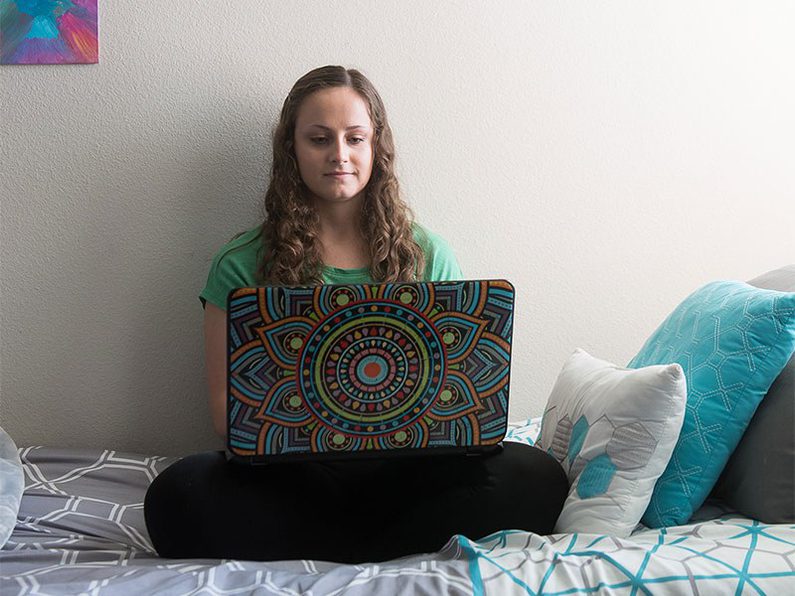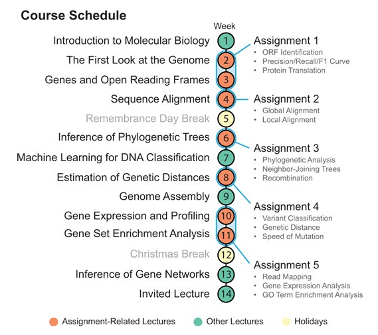Not known Facts About Bioinformatics Tutor
Wiki Article
The Ultimate Guide To Bioinformatics Tutor
Table of ContentsSome Known Factual Statements About Bioinformatics Tutor Bioinformatics Tutor Fundamentals Explained5 Easy Facts About Bioinformatics Tutor DescribedBioinformatics Tutor for DummiesBioinformatics Tutor Fundamentals Explained
Of the overall participants associated with the training, 80% were students from public college establishments, while the remaining 20% originated from private institutions. To receive a certificate of participation, pupils were called for to go to a minimum of 90% of the complete training hours. As a result of this requirement, an impressive 95% of the participants effectively obtained their certifications, having not only fulfilled the minimum attendance standards however also finished all appointed activities throughout the training.
During the elevation of the COVID-19 pandemic, specifically between June and August 2020, the project group was tasked with arranging specialized training in bioinformatics. This training was especially targeted at trainees from the research study team Nucleus for Research study in Applied Computer at the Federal University of Pará (UFRA) The adaptation to remote discovering platforms because of the pandemic created a chance to check out new training methods and digital tools that improved both reach and effectiveness.
To react to the growing need in the computing and life sciences areas, an innovative program was introduced in 2020 labelled Intro to Machine Learning. This course was made to give an easily accessible yet comprehensive introduction of Artificial Intelligence techniques, specifically as used in bioinformatics. The program was performed over 3 months, from October to December 2020, and was delivered totally online with the Google Meet system. This digital style enabled engagement from pupils throughout Brazil, a number of whom could not have had the chance to attend in-person sessions.
The 45-Second Trick For Bioinformatics Tutor
Roughly 50% of the overall training hours were devoted to practical activities where pupils constructed intelligent versions and applications in a range of clinical domains, including genetics, molecular biology, and ecological information analysis. These systems made it possible for trainees to engage in real-time data adjustment, model training, and formula trial and error.The program drew in 80 individuals in total. Sixty of them were associated with various college establishments in the state of Pará, while the remaining twenty originated from establishments located in 5 various other Brazilian states. This wide geographical representation highlighted the national passion in bioinformatics and the growing need for specialized abilities in this field. By presenting Artificial Intelligence in a appropriate and useful context, the effort offered to connect the space between concept and real-world application, providing trainees with a solid structure for future research study or work in the field.
The training campaign created component of a more comprehensive academic outreach initiative called the Bioinformatics when traveling task. This job has, throughout the years, introduced loads of trainees to the visit globe of bioinformatics and computational biology. The occasions held under this umbrella campaign have actually happened link across numerous regions and years, as summed up in Table 1 (Listing of events, locations, years, and overall numbers of pupils and trainers)
Numerous of these groups, originally brought together by their engagement in training events, have actually because gone on to produce independent scientific study in partnership with regional scholastic establishments. The training not only fostered clinical reasoning within the context of bioinformatics however also sparked collaborative relationships that extended beyond the training environment.
Facts About Bioinformatics Tutor Uncovered
The job itself was conceptualized and organized by MB and RR, that looked after the preparation and implementation of each action. Lectures were supplied by a multidisciplinary team being composed of megabytes, FA, EF, KP, JS, DM, SN, LP, LG, AC, IH, and RR. The very same group, excluding IH and RR, likewise acted as tutors for the practical training components. Funding for the task was given through the give 88887.200562/ 2018-00 from CAPES. The authors expand their gratitude to everyone that added to the realization of this task, whether straight or indirectly, since its beginning.The Federal College of Pará's Office of Research study (PROPESP/UFPA) also provided financial backing, particularly for the manufacturing of the final manuscript. The writers state no financial or commercial conflicts of interest that could have influenced the research study. Furthermore, all point of views and interpretations expressed in this short article are only those of the writers and do not always reflect those of their respective organizations, the author, editors, or reviewers associated with the magazine procedure.

4 Easy Facts About Bioinformatics Tutor Shown
From a pedagogical perspective, the teaching method utilized in the training was deliberately interactive. Classes were conducted in a way that urged pupil engagement and conversation, exceeding rote memorization to check out exactly how ideas are developed, applied in day-to-day live, and examined in scholastic settings. The instructional philosophy concentrated on supporting both strong and struggling students, giving customized support, and building confidence through continual mentorship and persistence.
Each group, consisting of about 36 individuals, was sustained by 3 advisors-- many of whom were postdoctoral researchers with specialized experience. These advisors not just aided make the team projects but also facilitated their implementation, making certain that each research study concern was both relevant and appropriately challenging. The objective was to supply a naturally reasonable context that participants can check out through flexible objectives and access to curated datasets.
For additional understandings into the technique and results of this project-based learning strategy, visitors are directed to S1 Text, which consists of detailed summaries of the instructional structure, assessment approaches, and job themes utilized in the training sessions.
Indicators on Bioinformatics Tutor You Need To Know
Of the total participants included in the training, 80% were students from public greater education organizations, while the continuing to be 20% came from private organizations. To certify for a certification of participation, trainees were called for to attend at least 90% of the overall training hours. Especially, past the students that signed up in the training sessions, 7 skilled teachers participated in delivering the programs, while three specialized research professors coordinated the general training process. Around 50% of the total training hours were devoted to functional tasks where pupils constructed smart designs and applications in an array of clinical domains, including genetics, molecular biology, and ecological data evaluation. The training not just fostered clinical reasoning within the context of bioinformatics yet additionally sparked collective connections that extended beyond the training environment.Report this wiki page